This week I present the third and final installment in our discussion about diabetes mellitus (DM). Previously we reviewed this disease as it relates to both dogs and cats. Now we will chat about proper handling of insulin and taking care of your diabetic pet at home.
Diabetes Mellitus Issue #1: Proper insulin handling
All insulins must be kept in the refrigerator, and should never be frozen or heated. As you learned in the first two posts of this three-part series, dogs and cats can be treated with any number of insulins. Some are of animal origin and some are from humans. Your pet’s primary care veterinarian and/or a board-certified veterinary internal medicine specialist with help you pick the best insulin for your pet. All insulins have expiration dates, but many of those dates were established specifically for humans and don’t necessarily apply to dogs and cats. Your pet’s medical team should advise you how often you should replace your fur baby’s insulin bottle. Additionally you should obtain a new bottle of insulin if it changes appearance.
Diabetes Mellitus Issue #2: Insulin administration points
All diabetic pet parents should spend a meaningful amount of time with their pet’s veterinarian to learn about diabetes mellitus, particularly how to properly administer insulin to diabetic pets. As a board-certified veterinary internal medicine specialist, I work with diabetic pet parents essentially on a daily basis. In addition to spending time with me learning about this disease, new diabetic pet parents often spend 60-90 minutes with my licensed veterinary technicians to ensure they are comfortable with the technical aspects of caring for their diabetic pet.
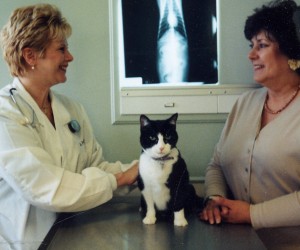
Pet parents who are not comfortable with insulin administration for their pet should immediately schedule some additional face-to-face time with their family veterinarian to review this information. There are many acceptable ways to administer insulin to dogs and cats, and even more “tricks of the trade.” A pet’s primary medical team should thoroughly discuss this information with diabetic pet parents. Additionally consulting with a board-certified veterinary internal medicine specialist can be uniquely beneficial. Below are some points about insulin administration I believe are essential for all diabetic pet parents to know:
- Prior to administering insulin to your pet, some insulins must be mixed thoroughly and properly. Do not shake an insulin bottle, but rather gently roll it in your handle for at ~30-60 seconds. Some insulins (i.e.: glargine/Lantus, detemir/Levemir) do not need to be mixed prior to administration.
- Each insulin type must be used with very specific syringes, most commonly U-40 and U-100 syringes. For example, glargine/Lantus, Humulin/Novolin N, and detemir/Levemir is called a U-100 insulin, and should only be used with U-100 syringes. Conversely Vetsulin/Caninsulin and ProZinc are U-40 insulins, and should be used with U-40 syringes. Use of the incorrect syringe can lead to incorrect dosing of insulin and subsequently inadequate diabetic control.
- After withdrawing the desired amount of insulin, always double-check yourself to ensure you have withdrawn the proper amount of the drug.
- The site of insulin injection should change with each administration. Repeated injection at the same location can lead to scar tissue formation that inhibits reliable absorption of insulin, potentially resulting in poor diabetic control.
- You may find it initially helpful to work as a team with another family member to help you hold and/or distract your diabetic pet during the insulin injection.
Diabetes Mellitus Issue #3: At-home glucose monitoring
Just as human diabetic patients need to periodically evaluate their blood sugar levels, so too must glucose monitoring be performed in diabetic dogs and cats. In dogs and cats, both blood and urine glucose levels can be monitored.
Blood glucose: Serial blood glucose measurements (also called glucose curves) are considered one of the most effective methods for determining how a diabetic patient is responding to prescribed therapies. Ideally glucose curves should be performed at home where a diabetic patient is most comfortable and relaxed. Blood glucose/sugar levels often elevate quite significantly (particularly in cats) in a hospital environment, and thus making treatment decisions based on blood glucose curves performed in a hospital may not be accurate.
With one exception, “spot checks” of a pet’s blood glucose (either at home or in hospital) are relatively useless and certainly not adequate for directing insulin therapy in diabetic patients.
Spot checks of blood glucose are rarely helpful in guiding insulin therapy, and in most situations, are an inappropriate use of a family’s financial resources.
The one exception to this statement is a concern for hypoglycemia (low blood sugar). If pet parents are concerned their fur baby’s blood sugar is too low, measurement of blood glucose at that time is very appropriate. See point #5 below for more information.
Performing an at-home blood glucose curve is often a relatively straightforward task and well-tolerated by dogs and cats living with diabetes mellitus. Only a very small blood sample (often less than a drop) is necessary to measure your dog or cat’s blood glucose level. Your pet’s family veterinarian should spend ample time teaching you how to perform this beneficial at-home testing, and you may find it helpful to consult with a board-certified veterinary internal medicine specialist to gain additional training. There are various blood glucose meters that be used at home to measure your pet’s blood glucose, and the AlphaTRAK blood glucose monitoring system has been specifically designed for use in dogs and cats. Your veterinarian can help you choose an appropriate meter for your fur baby living with diabetes mellitus. Our friends at Veterinary Partner have made an informative video demonstrating how to collect blood samples from the ear of diabetic pets. Click to here to watch board-certified veterinary specialist Dr. Margie Scherk demonstrate this simple technique in a cat.
Urine glucose: In addition to monitoring blood glucose curves, your veterinarian may recommend measuring urine glucose. This type of monitoring is often advocated for patients in whom insulin requirements are expected to initially fluctuate. For example, Schnauzers of all types often have markedly elevated triglyceride levels as a result of a genetic condition called familial hyperlipidemia.

Triglycerides actually fight against the effects insulin (a process called insulin antagonism), essentially negating the benefits of insulin. Affected pets often require much higher doses of insulin. As medications to lower triglyceride levels start to work, insulin requirements understandably decrease/normalize; if insulin doses aren’t appropriately reduced, affected pets could experience dangerous low blood sugar reactions.
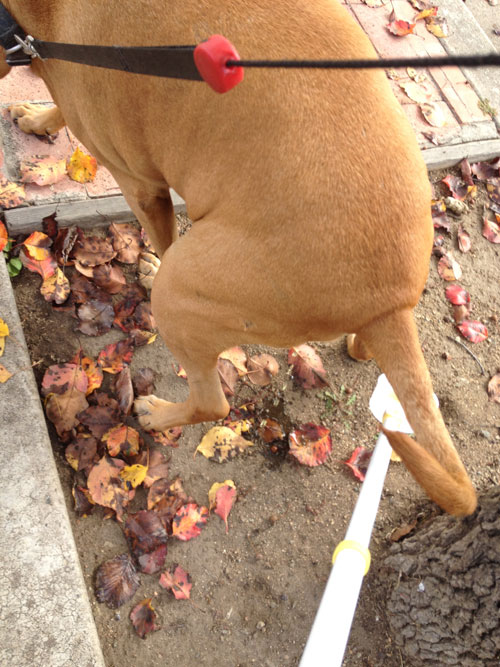
Monitoring daily urine glucoses in these patients can be instrumental in guiding insulin dose adjustments. Your family veterinarian (and a board-certified veterinary internal medicine specialist) can advise you if urine glucose monitoring would be helpful for your pet, as well as how to adjust insulin doses based on trends in urine glucose levels.
Diabetes Mellitus Issue #4: Keep a logbook
How a diabetic dog or cat is doing at home is just as (and sometimes more) important as any blood or urine test a veterinarian may perform to assess adequacy of therapeutic interventions. Is the pet losing weight? How is his/her appetite? Is s/he urinating appropriately or more frequently? Are insulin doses fluctuating a lot? Have there been any incidences of low blood sugar?

Understandably this is a lot of information of which to keep track, and remembering monthly, every three months, and certainly every six months can be a daunting (and unrealistic) task. For this reason, keeping a detailed journal at home is uniquely helpful, and the following information should be regularly recorded:
- Type, amount and timing of meals
- Dose and timing of insulin administration
- Type and duration of daily physical activity
- Any blood glucose measurements obtained
- Any urine glucose measurements obtained
- Any incidents of vomiting, lethargy, diarrhea, loss of appetite, etc.
- Any abnormal behavior
- General appearance (hair coat, musculature, ability to climb & jump)
Diabetes Mellitus Issue #5: Hypoglycemia (low blood sugar)
The most important problem that can occur in diabetic patients is hypoglycemia that occurs chiefly when too much insulin was given to the affected pet. Hypoglycemia is most often defined as a blood sugar less than 60 milligrams per deciliter (mg/dL). Common signs of hypoglycemia include:
- Weakness
- Loss of balance
- Collapse
- Muscle twitches
- Seizures
If you believe your diabetic pet is living with low blood sugar, immediately check their blood sugar. If hypoglycemia is confirmed and your pet is able to eat, offer them a meal. If you are unable to measure your pet’s blood sugar at home, you can simply offer some food as long as your pet is able and willing to consume it. If a hypoglycemic animal is unable or unwilling to eat, pet parents can drizzle sugary syrup (i.e.: Karo syrup, maple syrup) on their pet’s gums, always taking precaution to avoid inadvertent bite injury. If your pet is unconscious and/or seizing, the nearest veterinarian should evaluate him/her as soon as possible.
One of the most effective ways to avoid a hypoglycemic crisis is to not give insulin when you are not sure whether to give it or not. For example, diabetic patients should not receive insulin in the following situations:
- Pet parents are not sure whether or not a pet was given insulin
- Pet parents believe they gave the wrong amount of insulin
- A diabetic pet moves during insulin injection and some insulin leaked or wasn’t injected
If a pet doesn’t eat his/her meal or if s/he vomits after eating, your pet’s veterinarian will recommend one of two possible courses of action:
- Not to give insulin
- Administering only one half of the prescribed insulin dose
The most appropriate course of action is relatively patient specific, and you should consult with your pet’s veterinarian about which course of action is best for your fur baby. If #2 is recommended and vomiting after eating and/or a lack of appetite is observed again at the next mealtime, the affected pet should be evaluated by a veterinarian immediately.
The take-away message about monitoring and insulin handling…
Effective management of dogs and cats living with diabetes mellitus requires exquisite attention to detail. Insulin requirements often change in affected pets, and detailed monitoring both at home and with your pet’s healthcare team is essential for maximizing optimal therapy. Partnering with a board-certified veterinary internal medicine specialist is often beneficial to help ensure the most effective and financially responsible treatments and monitoring strategies are employed.
To find a board-certified veterinary internal medicine specialist, please visit the American College of Veterinary Internal Medicine.
To find a board-certified veterinary emergency and critical care specialist, please visit the American College of Emergency and Critical Care.
Wishing you wet-nosed kisses,
cgb


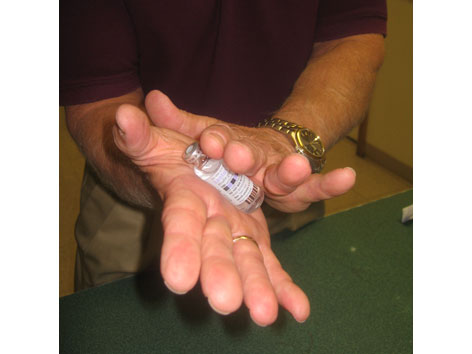
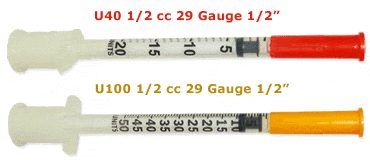


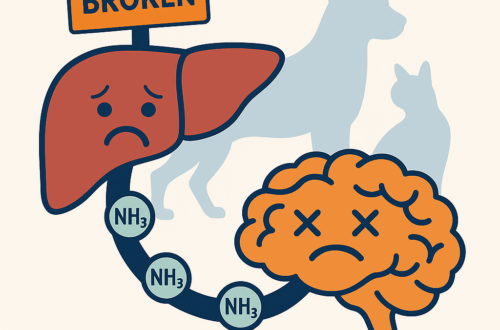
i made and appointment for my schnauzer at the vet,,,sometimes he cannot hold his urine,and he’s been out half an hour before, somebody told me its a sign of diabetics,,,,is it possible my baby will be 10 years old in August. Thank you,,,,Aline
Hi Ms. Proulx,
Thank you for your comment, and I hope you found the information helpful. Given your fur baby is having trouble holding his urine, I think you’re making a great decision to have his primary care doctor check him out! It is true some diabetic patients need to urinate more frequently, but there are also many other causes of the signs. So the best first step is a complete evaluation with your family veterinarian. Although I hope it doesn’t happen, IF your boy’s health becomes complicated, you make find it helpful to consult with a board-certified veterinary internal medicine specialist. Keep up the great job being a dedicated and proactive pet mom!
Excellent article. My almost 12 year old dsh was diagnosed in September & its been hectic to say the least. I love my cat, Lisa, and want the best for her.
Hi Ms. Grzywacz,
Thank you for the kind words about my blog post. I hope you will consider sharing the information with other pet parents you know. If you are having challenges with your diabetic fur baby, you may find it helpful to consult with a board-certified veterinary internal medicine specialist in your area. Keep up the great work!